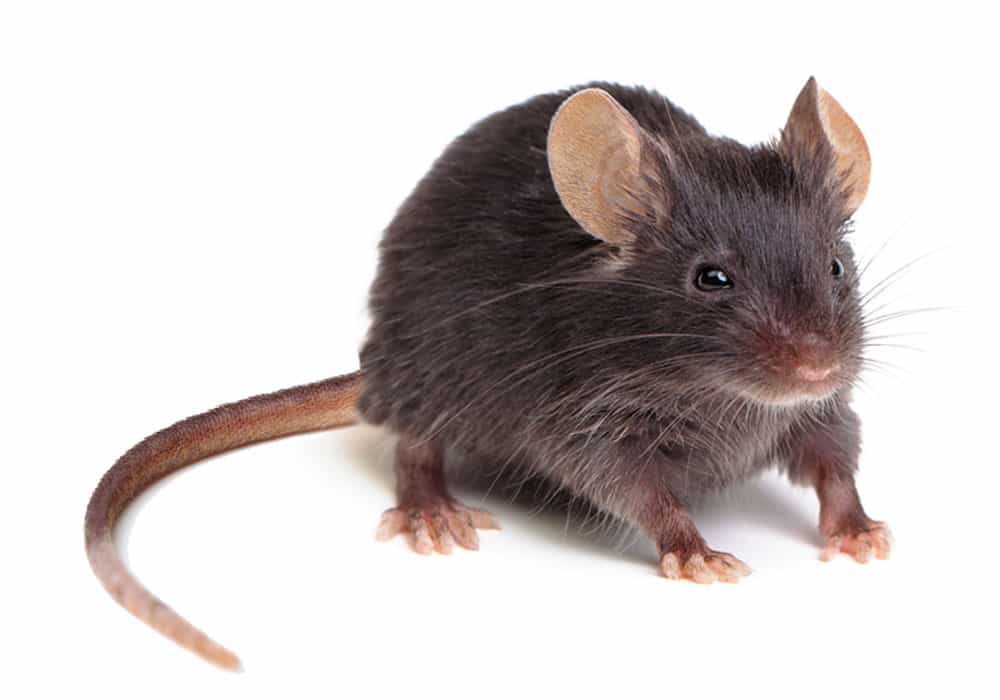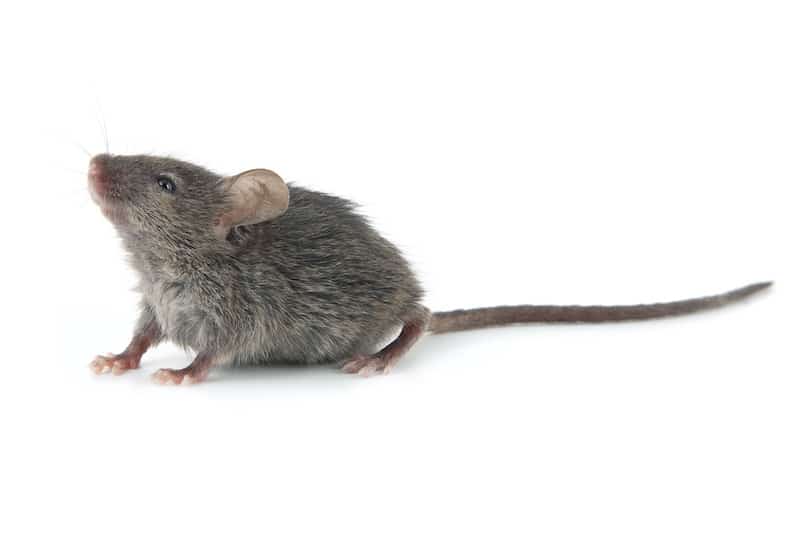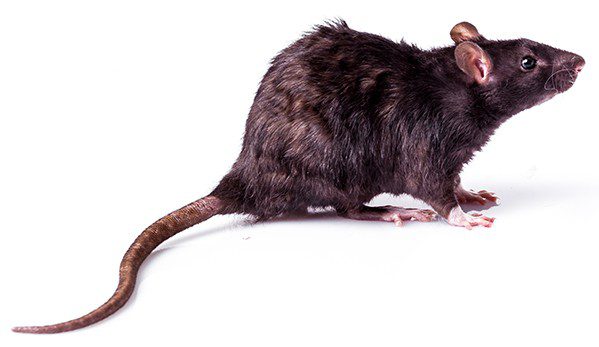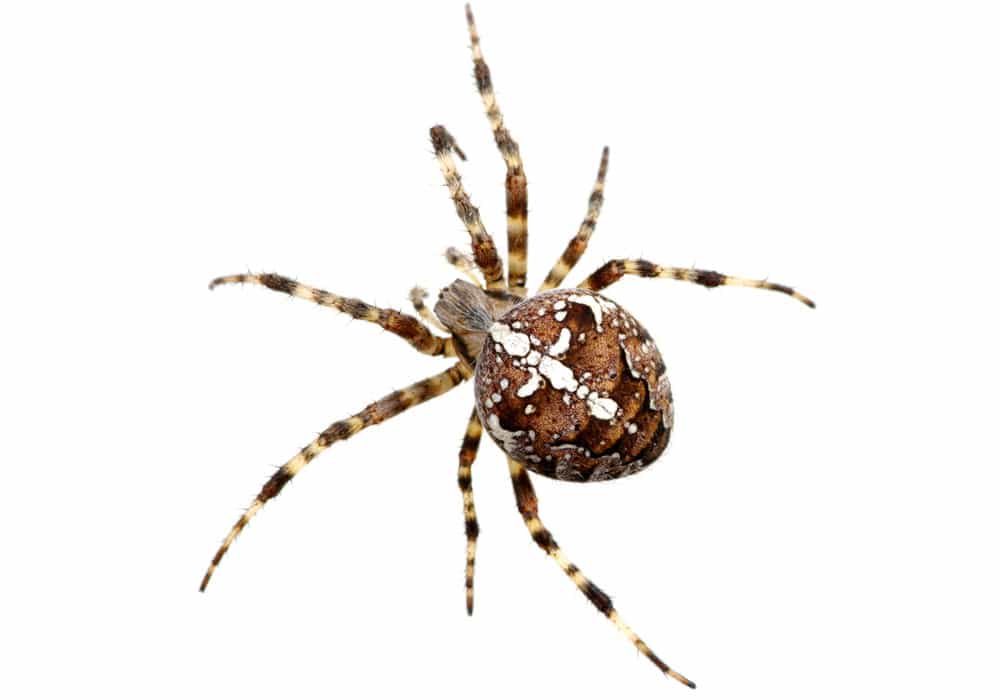
BEST Pest Control for Mice and Rats Near Vancouver
Mice, rats, and other rodents are year-round pests in the Vancouver, WA metro area.
- What are Mice?
- What Pest Control for Mice Works Best near Portland & Vancouver
- What are Rats?
- What Pest Control for Rats Works Best Near Vancouver & Portland?
- How did I get mice and rats in my home near Portland or Vancouver?
- What do mice and rats eat?
- Where are the mice and rats coming from?
- More Information About Mice & Rat Pest Control
- Mice & rat extermination near you with guaranteed results
- Why should I call professional pest control near Portland and Vancouver?
Mouse Description

Size
The average house mouse in the Pacific Northwest is approximately 3 to 4 inches in length, measured from nose to base of tail, typically weighing approximately 1.5 oz.
Color
Mice can vary dramatically in their coloring. Usually, with mice in the wild, you’ll see that they are usually some combination of gray, brown, or black. Domesticated mice can be even more varied in their appearance.
Norway Rat Description

Size
Norway rats are some of the largest rodents of their particular species, measuring nearly two feet in length from the tip of their nose to the tips of their tails.
Color
Norway rats are brown but can also be gray in color, with variations in tone visible throughout their fur, which is very coarse in texture.
What are Mice?
Mice are small ground mammals with large, rounded ears, long tails, and long noses. They are prevalent as pests (with the “house mouse” being the most abundant of the species) and commonly infest homes and other outbuildings in search of food, water, and shelter.
Mice, known for their long, sharp front teeth, rapid reproduction cycles, and ability to get into even the smallest of spaces, frequently cause extensive damage to homes. Moreover, mice spread disease-infested bacteria and viruses and cause various other problems for people facing an infestation.
What Pest Control for Mice Works Best Near Vancouver?
Though DIY methods can produce reasonable results if used early enough in the infestation, the most effective extermination methods are delivered via professional assistance. Mice are incredibly adept at detecting food and water, entering small spaces, and using diverse materials to build their nests and quickly reproduce.
Mouse infestations can be challenging to locate at the source and complicated to put an end to. Like their cousins, the common brown rat, mice are intelligent, resilient creatures who must be dealt with quickly and definitively.
What are rats?
Norway (or brown) rats are the most common type of rat found in the Pacific Northwest. Similar in appearance (though much larger) than the house mouse, rats have incredibly keen senses of hearing and smell, assisting them extensively in their ability to find sources of food.
These highly intelligent creatures, like the house mouse and other rodents, are carriers of infectious diseases and should be exterminated as soon as indication or awareness of an infestation occurs.
What Pest Control for Rats Works Best Near Vancouver?
As with mice, DIY methods can be applied to home rat infestations. However, rats are highly intelligent creatures known to easily avoid what they perceive as disruptions in their environment — baits and traps, for example. Professional extermination services are recommended to rid your home and property of a rat infestation effectively. Trusted pest control professionals will find the root of your infestation, eradicate the pests, and provide instructions on how to avoid future infestations.
How did I get mice and rats in my home near Vancouver?
Rodents need the same things people need for survival: food, water, and shelter. This makes the home an attractive place to rodents! Inside houses in the Pacific Northwest, mice and rats are most active in crawl spaces, walls, kitchens, and storage areas (e.g., a garage). Mice and rats can be found almost anywhere inside or outside the home. It’s not uncommon to see rodents nesting in outdoor grills or inside automobiles. Rodents also love burrowing in foundations and outdoor landscapes. Mice and rats are like little Houdini’s. Mice can squeeze through dime-sized holes, and rats can fit their bodies through quarter-sized holes!
What do mice and rats eat?
What don’t they eat? By nature, rats and mice are omnivorous creatures, largely preferring grain, seeds, nuts, fruits, and vegetables. For instance, rats eat whatever they can find in the trash and even hunt insects and other small animals. When food is scarce, mice and rats will even eat their own species to survive.
Of course, the average person’s home is a literal buffet for rodents, so homeowners must take extra care in storing their food carefully, and eradicating an infestation as quickly as possible when one presents itself. Rodents carry diseases, leaving harmful-to-human bacteria through their urine and droppings.
Where are the mice and rats coming from?
Rodent infestations in your home or outbuildings are a common occurrence. Numerous factors could attract mice and rats to your property, such as ineffectively sealed trash, recycling, or compost bins; accessible bird seed, pet food, or other animal feed, and easy access to warm, safe shelter. The popularity of urban farming can also increase your risk for mice and rats. Keeping chickens, for instance, is very attractive for rats. Feed, droppings, eggs, and even small chicks are at risk, attracting them to your yard.
Rodents are resilient creatures, and our homes are the perfect venue for them to lead a thriving existence, so do all you can to cut off their access. We recommend reviewing your home for holes, cracks, and other vulnerable areas (such as where utilities enter the home). Mice need only an entry point about the size of a dime to gain access to a space. Look regularly, and look carefully!
More Information About Mice & Rat Pest Control Near Vancouver
Are mice & rats Harmful?

Yes. Mice and rats can cause severe asthma, food poisoning, and many diseases in people and pets.
Can mice and rats transmit diseases?
Yes, mice and rats can transmit disease. Although mice and rats can transmit diseases by biting us, they rarely do.
How do mice and rats transmit disease?
Rodents typically spread disease through their urine and feces. A mouse is capable of producing 40-100 droppings per day. Rats can excrete half an ounce of urine per day. Yep, it’s pretty gross.
Can mice and rats cause property damage?
Mice and rats have teeth harder than iron and can chew through cement and copper! What’s more, mice regrow their incisors in their entirety in about a month and a half. Thus, much of the property damage caused by rodents stems from their need to be continuously “gnawing.” It’s not unusual for Aspen Pest Control to get calls from prospective customers reporting thousands of dollars in damage to vehicles, furniture, and electrical wiring. Rodents in the Northwest are also notorious for tunneling through and destroying insulation in walls, attics, and crawl spaces. Rodents can also cause fires by chewing on electrical wires.
Are mice & Rats SEASONAL?

Mice and rats are most active in homes from the fall through the winter.
Rodents will most likely look for shelter in homes once the cold season begins. Mice and rats will begin a hunt for warmth in the fall. Should they gain access to your property, they will quickly search for access to food, water, and shelter. Have standing water on your property? They’re going to love it! Can they gain access to your home through small holes, cracks, or other fractures in your home’s exterior? They’ll love those, too! Once inside, they’ll seek out safe spaces, nesting materials, and whatever food they can get their paws on.
Call us today for Vancouver or Portland, OR pest control services!
can i treat mice & rats on my own?

Exterminating a mouse or rat population requires more than DIY traps.
As we’ve mentioned, there are DIY methods that can be applied, but in our experience, it can be too overwhelming of a process for the layperson. To efficiently and effectively rid your home of rodents, it requires more than simply setting traps.
How do professional pest control companies treat for mice differently?
Aspen typically uses a combination of specialized traps, baits, and exclusion techniques to quickly bring the mouse population in and around your home under control. Our proprietary methods produce fast results. Specialized traps provide a quick knockdown, and baits offer lasting protection. We’re happy to dispose of dead trapped mice, so you don’t have to. Fortunately, our baits tend to cause the mice to die away from the home. Call us today for Vancouver or Portland, OR pest control services!
How do professional pest control companies treat for rats differently?
Rats are notoriously tricky to “outsmart.” They’re intelligent animals, and if not baited properly, rats are known to exhibit “neophobia,” which means bait shyness. Rats also quickly learn to avoid new objects in their territory, like snap traps, especially if not correctly set. If you have a rat problem, allowing a pest professional to handle the trapping and baiting processes is critical.
We use cutting-edge baits that mimic the rat’s natural food source. Our specialized traps and bait are carefully placed in the areas and positions that will produce the greatest likelihood of success. We can also remove rat carcasses from the property, so you don’t have to.
Remove resources & opportunity
remove the infestation
- Remove their access to resources. Mice, rats, and other pests don’t need a lot to survive. The standard-bearers of food, water, and shelter are basically all they need in order to create a thriving nest for themselves (and a throbbing headache for you!)
- Keep it Contained. Do you have pets? Bird feeders? Lawn seed? Chicken coops and feed? Do you use outdoor composting materials? Using sealed containers and keeping them indoors (where appropriate, of course) for all of these potential food sources is key in keeping rats and mice disinterested in your home.
- Seal The Trash & Recycling. Similarly, we recommend keeping your trash and recycling bins sealed tight as well. If you are a composter, make sure to mix your composting materials regularly in order to increase decomposition while warding off continued pest infestation.
Common Places To find rats in your vancouver home
- High and low. Mice are able to set up shop in all sorts of places — eaves, rafters, crawlspaces, garages, and similar spaces that keep them protected and out of harm’s way.
- The foundation. It’s common for a home’s foundation to slightly crack due to settling. It’s also common for those cracks to grow over time and for mice to take advantage of the opportunity!
- The fireplace. And the chimney. A fireplace can add a wonderful atmosphere to a home. It can also provide all sorts of ways for pests to enter the home. An open damper or cracks in the mortar between bricks is all it takes for mice to gain access to your attic and other parts of the home.
- Broken window seals and doors. All sorts of issues can be caused by doors and windows with broken seals, including a perfect way for mice to enter your household. We’d recommend checking these periodically, especially after seasons of extreme temperature change.
- Where utilities enter the home. Check access points for dryer and floor vents, cellar doors or accessible crawl spaces. Even small spaces where utility lines, electrical cables, and plumbing are routed into the home can cause an opening large enough for a mouse. These are areas where the use of copper or steel wool might be advised.
- Remove excess debris and foliage. It’s hard to stay on top of yard maintenance on your property, but an excess of debris, plant-life, and even things like firewood being stacked too close to a building creates the ideal environment for nesting.
Stay diligent and review your home regularly
- Review the exterior of your home regularly. Is your home properly sealed? This is one of the most common and easiest ways for mice to enter the home. (Not to mention the energy efficiency implications associated with a poorly sealed home.)
- Seal any breaches found in the home. We’d encourage you to speak with a professional from your local home building supply or hardware store so you’re certain that you’re using the right materials in the right way. We know it’s quite common for folks to use a combination of steel or copper wool and caulk. Caulk covers the sealing portion of the situation while the steel or copper wool is much more preventive — mice are unable to chew through the wool as it gets caught in their teeth.
- Don’t ignore the small holes — seriously! It’s surprising, but even holes as small as the size of a quarter are big enough for mice to pass through.
Mice & rat extermination near you with guaranteed results
Why should I call professional pest control near Vancouver?
Simply put, professional exterminators deliver results. Because mice and rats are highly social, they rarely infest as individuals. If you detect a rodent problem in or around your home, you should act quickly before it worsens. For example, a mouse population can reach 200 individuals under ideal conditions in a month! Our rodent extermination methods are child- and pet-friendly and have been used successfully thousands of times.
When Aspen Pest Control treats a rodent infestation, results are always 100% guaranteed.
Prevent a rodent infestation
It’s one thing to exterminate rats and mice from your home. It’s equally important to take protective measures to prevent rodents from returning.
• Regularly examine your home for holes, cracks, and other entry points — seal any openings as a home repair expert recommends.
• Ensure that your property is devoid of any standing water, as rodents will seek out these areas for drinking water
• Do not store items or allow an overgrowth of vegetation too close to your home — this creates shelter and encourages pests
• Keep all trash and recycling bins tightly sealed
• Regularly turn compost to encourage quicker breakdown
• Store all pet food and items like bird seed in tightly sealed containers, preferably indoors
• In the home, make sure to keep all food prep and consumption areas clean and clear of food waste
• Keep dirty dishes out of the sink; regularly run your dishwasher, if applicable
• Regularly empty all indoor trash cans and recycling bins
Early intervention is crucial for rodent extermination
Rodents reproduce incredibly quickly. Before you know it, you have a much larger problem on your hands, one that can lead to a great deal of property damage, unnecessary stress, inconvenience, and even potential health hazards. When you suspect you have a rodent infestation, we recommend contacting a professional. It’s our responsibility to find the source of the infestation, explain the situation to you, provide options, and treat the problem accordingly.
Mice & Rat Control Near You in Vancouver
1
INSPECT - Regularly & carefully
One reason your friends and neighbors trust Aspen Pest Control is our commitment to a job well done. Our Home Protection Plan — a favorite of most of our customers — is a quarterly pest control plan that focuses as much on prevention as it does on extermination. Four times per year, we visit your home, inspect your property for pests, identify any problem areas, and treat accordingly based on your needs, preferences, and budget. It not only gives our customers peace of mind, it gives them a pest-free lifestyle!

2
family-safe products
We take special care to use child- and pet-friendly products wherever possible. We have various effective products in our arsenal, ranging from baits and residual dust to potent chrysanthemum derivatives. All of our green treatments are 100% guaranteed and safe for the environment.

3
ongoing observation
Mice and rats often won’t stop trying to find ways into your home, food, or garbage. The most important thing is to take preventative measures and inspect your home regularly for any signs of rodents.

Secure your home near Vancouver from mice and rats

100% satisfation guarantee
Pests can be stressful. So when you call a pest control expert, you deserve their best work. At Aspen Pest Control, delivering you the service you expect and the value you deserve is something we stake our reputation on. We’d be honored to serve you.
We also provide services to get rid of other household pests:
- Stink Bug Exterminator Vancouver
- Box Elder Bug Treatment
- Flea Removal Service Vancouver
- Paper Wasp Nest Removals
- Spider Pest Control
- Yellow Jacket Nest Removal
- Mice or Rat Extermination
- and More!
Call Aspen Pest Control today to finally be rid of your rodent problem.
Talk with an expert rat or mouse pest control technician
Vancouver Office:
12104 NE 95th St.
Vancouver, WA 98682
Portland Office:
8305 SE Monterey Ave
Suite 220 Q
Happy Valley, OR 97086
Mailing Address:
13504 NE 84th St
Suite 103 – 263
Vancouver, WA 98682




